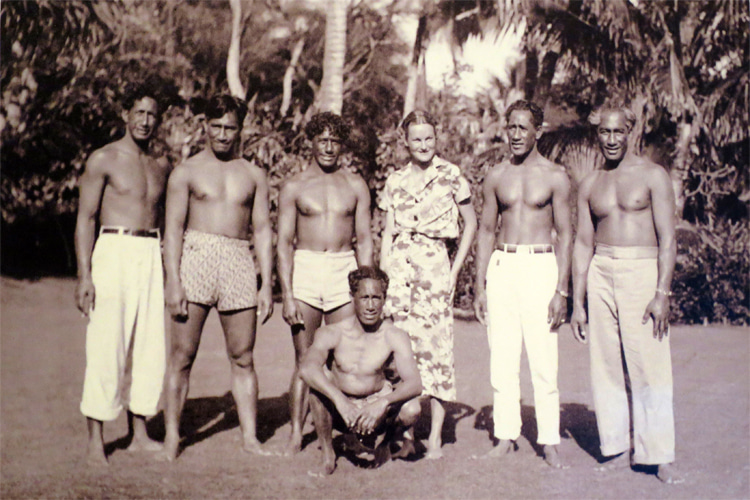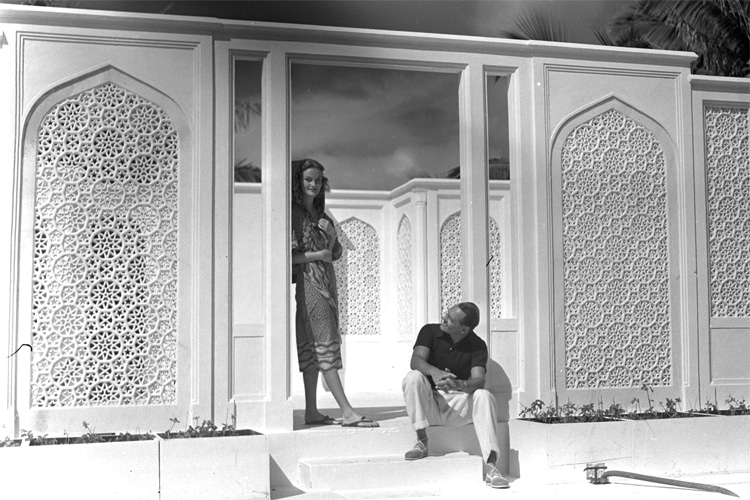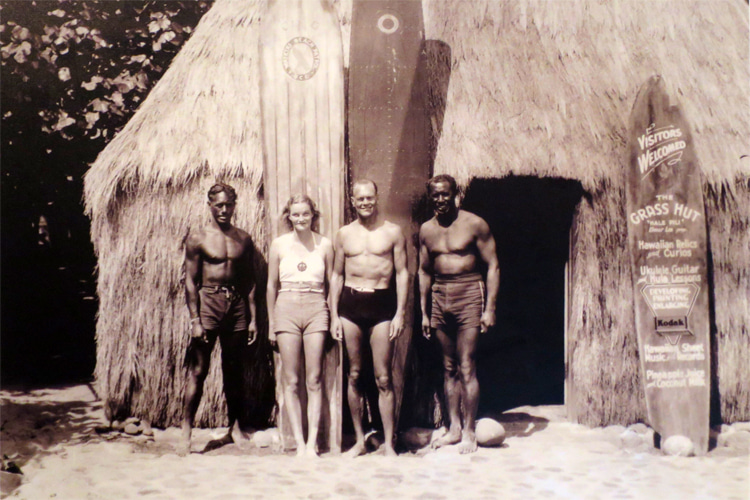Born November 22, 1912, to tobacco tycoon James Buchanan Duke, Doris Duke was no ordinary heiress. The "richest girl in the world" was also a women's surfing pioneer.
While her father's legacy with the American Tobacco Company and Duke Power laid the foundation for her fortune, Doris was far from the stereotypical spoiled, wealthy girl.
After inheriting his estate upon turning 21, she founded Independent Aid, Inc., her first charitable foundation, setting the tone for life-defying expectations.
In 1935, Doris Duke married James H. R. Cromwell and embarked on a honeymoon that was more of a global exploration.
Traveling through the Middle East and Asia, they amassed a significant art collection.
This journey introduced many cultural fascinations that would occupy Duke throughout her life, culminating in a stay in Honolulu, Hawaii.
Meeting the Kahanamoku Family
Duke's arrival in Hawaii marked the beginning of her love affair with the island - and its famed surfing culture.
Introduced to the Kahanamoku family, Doris struck an immediate friendship.
While in Hawaii, Duke was influenced by local Hawaiian culture, notably through her friendship with Samuel Kahanamoku, his brothers, and the Waikiki Beach Boys.
What was supposed to be a two-week stay became three months.
But Duke Kahanamoku, the father of modern surfing, took her under his wing, teaching her the intricacies of this ancient Polynesian sport.
Doris wasn't the first woman to surf.
English novelist Agatha Christie, for instance, had already learned to ride waves in 1922 in Muizenberg, South Africa.
But she was undoubtedly one of the most prominent, especially considering her social status.
Under the tutelage of Duke Kahanamoku, the 6'1'' tall young woman rode the waves with the ease of a seasoned athlete, shattering social norms that questioned the capability or appropriateness of women participating in such an athletic endeavor.
Duke's engagement with surfing drew considerable attention.
Her actions resonated in mainland America and beyond, challenging society's restrictive definitions of what a woman - especially a woman of her social standing - could or should do.
It was a testament to her character, one unafraid of societal judgments and fueled by an appetite for life's richest experiences.
According to some reports, Duke and Duke fell in love.
Historians believe that Arden, the baby Doris gave birth to in July 1940 and died 24 hours later, was almost certainly Kahanamoku's daughter.
Some reject those rumors.
They support the theory that the baby who died was James and Doris' child and that she and Kahanamoku were just friends, as the Big Kahuna very much loved his soon-to-be wife.
They also question the possibility of the most powerful and famous woman in the world having an affair with someone much older than her.
The Hawaiian swimmer and surfer, who never officially had children, soon married dance teacher Nadine Alexander three weeks after her 27-year-old heiress lost her child.
Again, some say it was a way of deviating the attention from his unconventional relationship with a white, rich, and married woman.
We only know that Doris gave the new couple around $12,000 ($200,000 today) for a new house close to her.

The Creation of Shangri La
Duke's passion for Hawaiian culture and Islamic art culminated in the construction of her Hawaiian home, Shangri La.
Commissioning architect Marion Sims Wyeth for the project, she imported artisans from India, Morocco, Syria, and Iran, mixing Islamic architecture with Hawaiian elements.
Shangri La is a marvel of design and architecture, influenced by the Taj Mahal and other Indian architecture.
The home took three years to build (1936-1938) and involved 250 workers.
Doris took an active role in its planning and construction, imbuing the home with the cultural richness she had garnered over her years of travel.
She envisioned Shangri La more as a personal sanctuary than a place for entertaining guests.
This desire was at odds with her husband, James Cromwell, who insisted on having a guest suite.
Initially, the home was named Hale Kapu ("Forbidden House").
Still, it was later renamed Shangri La, inspired by the 1937 film "Lost Horizon," which presented an idyllic and timeless place where people could find peace and happiness.
Shangri La eventually became a repository for Duke's vast collection of Islamic art, which she assembled based on her own tastes and intuitions rather than expert advice.
She believed that the creation of beauty was the purpose of her life.
The tape recordings Duke left behind, featuring traditional Hawaiian songs and her renditions, give us a glimpse into her life, emotions, and the atmosphere she cultivated at Shangri La.
Today, Shangri La stands as a museum dedicated to the global cultures of Islamic art and design.
It is a fitting legacy for a woman whose life was a tapestry of diverse influences.

Contributions to the Native Communities
Doris Duke's Hawaiian connections weren't limited to surfing and Shangri La.
For nearly 20 years, she funded programs supporting Native communities.
One of them is the Doris Duke American Indian Oral History Program, a large-scale effort that recorded thousands of spoken histories from Native leaders.
In her will, Duke ensured that her estates, including Shangri La, would continue serving the public and the causes she believed in.
The Doris Duke Foundation was established to manage her diverse interests, ranging from environmental conservation to the welfare of women and children and, of course, the arts.
The Doris Duke Surf Fest celebrates the colorful life of the world's first competitive female surfer at Rough Point.
